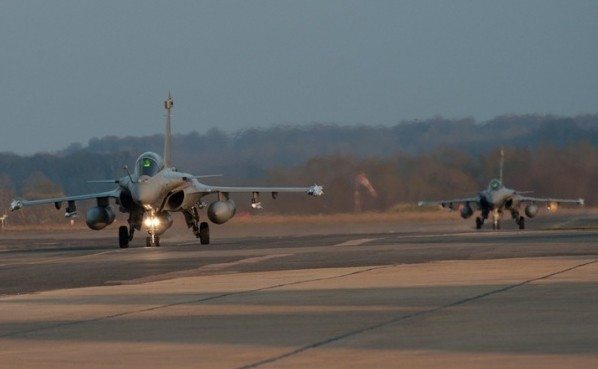Just ahead of its 81st anniversary on October 8, the IAF has virtually sounded the red-alert over its fast-dwindling number of fighter squadrons. Confronted with the government’s slow decision-making, fund crunches and Hindustan Aeronautics’ sluggish performance, the force is now being forced to further stagger the already long-delayed retirement of its ageing MiG-21s and MiG-27s.
The grim situation can be gauged from the fact that IAF will continue to fly its 110 upgraded MiG-21 “Bisons” — of the total 260 MiG-21s still in its combat fleet — till 2025. Making this startling admission, IAF chief Air Chief Marshal (ACM) NAK Browne on Friday said, “We are authorized 42 fighter squadrons but, at present, we are much below that.”
Though the primacy of airpower in shaping battles is undisputed, and both China and Pakistan are fast bolstering their fleets, the IAF is down to just 34 fighter squadrons (each has 16-18 jets) as of now.
So, even as plans are underway to upgrade airbases and advanced landing grounds for both the western and eastern fronts, there is a crippling shortage of modern fighters that can be deployed there.
With MiG-21 and MiG-27 squadrons slated for progressive phasing out over the 12th and 13th Plan periods (2012-22), IAF is desperate to ensure its long-standing new fighter induction plans are not derailed any further.
The topmost priority is the almost $20 billion MMRCA (medium multi-role combat aircraft) project to acquire 126 fighter jets, even as it will progressively induct the remaining 100 Sukhoi-30MKIs of the 272 such fighters contracted from Russia for around $12 billion.
The long-drawn MMRCA technical and commercial evaluation process began in August 2007, with the French Rafale fighter finally emerging the winner in January, 2012. But the contract — under which the first 18 jets are to be imported and the rest manufactured under licence by HAL over six years — is nowhere near being inked.
“The MMRCA and the first two squadrons of Tejas light combat aircraft (the indigenous fighter project sanctioned in 1983 but still to fully fructify) are very critical for us to maintain our deterrence capability. Otherwise, our force-levels will go down rapidly,” said ACM Browne.
With the country headed for general elections, it’s highly unlikely the MMRCA contract will be concluded in the ongoing fiscal. But the IAF chief said, “There is no back-up plan. The MMRCA is the only option, and it is highly doable. If we sign it by next year, the first MMRCA should come to us by 2017. We cannot delay it any further.”
Even the long-term plan for co-developing the fifth-generation fighter aircraft with Russia is in the doldrums. It will take at least another year to ink the $11 billion “full design R&D contract” for the futuristic fighter, admitted ACM Browne.
As per the earlier timeline, IAF was looking to induct over 200 of these swing-role stealth fighters from 2022 onwards. But that may not be possible now. India will eventually spend around $35 billion on this project over the next 15-20 years, with each jet to be subsequently produced costing over $100 million.










